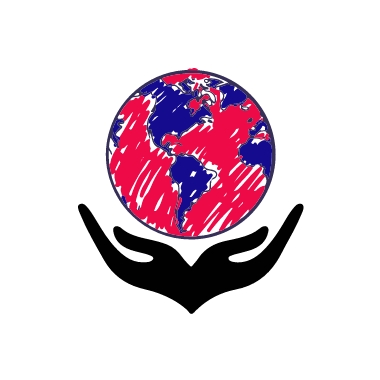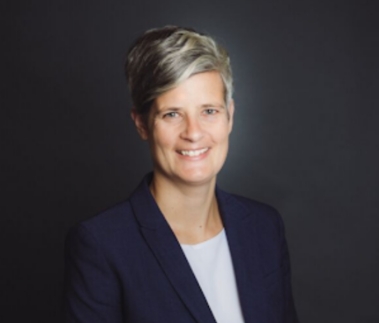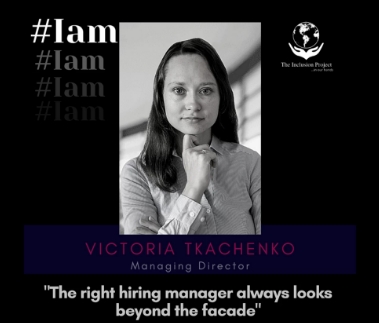Keynote Address by Mayor Lisa Helps

Mayor Lisa Helps’ Keynote Address at the Inaugural forum of The Inclusion Project
Mayor, City of Victoria
The Inclusion Project – Canada’s Inclusive Future and Newcomer Engagement Part 2: Covenant, Side By Side, and the Stories We Tell
How do we create inclusion in the 21st century? We need a new approach, led by civil society. In The Home We Build Together: Recreating Society the British Rabbi, Jonathan Sacks lays out an important framework.
I argued with the book in the margins from time to time as I don’t agree with all of his premises. In my younger years I may have dismissed it as “from another paradigm / too different” and stopped reading; but I’ve since realized that difference is a good teacher. It’s a key book in understanding how we can create and ensure belonging, empowerment and opportunities for collaboration, together.
This is especially important in the current age of division, the rise of populism, in an era where facts matter less and the dangerous echo-chamber of Facebook can shape reality. And it’s particularly important given an emerging trend of people’s minds being made up before they have actual information and a culture developing of both closed-mindedness and closed-heartedness. This leads to things like mosque attacks and other intolerable hate crimes.
I’ll outline the thrust of his book because there is detailed, compelling argument and a strong call to action.
The key question of The Home We Build Together is the same question we are grappling with here today at The Inclusion Project: “How do you construct a society that respects cultural and religious diversity while at the same time promoting civic equality, social cohesion and a sense of the common good?”
The concept of the common good is important.
Sack says fundamentally the problem we are facing is not a problem with the state, it’s a problem with society, civil society, it’s a problem with belonging. He puts it really beautifully, when he says, “The real arena of collective grace lies with us, the us-together we call … society.”
How do we achieve / embody this collective grace?
Neither the state nor the market have the capacity to deliver inclusion. As Paola said earlier this morning, “Inclusion is not something we can leave for others to do.”
Sacks says (through a detailed reading of the Hebrew Bible that I won’t go into here) that we need a new social covenant where all “parties agree to respect one another’s integrity as free agents.” In a covenant, “the parties bind themselves to one another in an open-ended bond of mutuality and loyalty. They agree to share a fate.”
This is critically important for The Inclusion Project. What fate do we all want to share? What do we want to create together with our differences as assets? What can we create as a whole that is greater than each of us?
What is the common good?
Sacks argues for covenant as a way of thinking about contemporary society. It’s important to explain what he means. He “distinguishes between social covenant and social contract. Social contract is an arrangement between self-interested individuals a “covenant is about creating a ‘we’ out of multiple ‘I’s’.”
I think that a new covenant is at the heart of The Inclusion Project that we’re here working on today. It’s the idea that “all of us must come together to ensure the dignity of each of us. Covenant is the politics of the common good.” As George said earlier this morning, a covenant is not about including, about who includes who, rather it is a shared commitment to dignity in diversity.
A covenant is a shared commitment to a common good. And this shared commitment can only be undertaken – and must be undertaken – by civil society.
Sacks writes: “There are two ways of getting other people to do what we want. We can force them: That is the answer of power. Or we can pay them: That is the answer of the market. But neither involves treating other people with dignity and respect … Covenant is a third possibility. We create co-operation not by getting you to do what I want, but by joining together in a moral association that turns You and I into ‘We.’ I hope you help me, because there are things we care about together. Covenant is a binding commitment, entered into by two or more parties, to work an care for one another while respecting the freedom, integrity, and difference of each.”
I don’t ’t want to go on and on in this theoretical way. But I want to emphasize that we need a fresh approach to inclusion and a renewed commitment to a common good and covenant offer us one way of thinking.
How do we do this?
I will continue with Sacks for just a moment as I move to the third part of my talk and to where I think we can go from here.
Sacks sites the 1954 research of Muzafer Sherif and his famous Robbers’ Cave Experiment. (Please read the link for information or watch the video of my talk.) In a strong and moving revelation, Sacks asserts that the key to remaking civil society and a strong social fabric is not dialogue; it is doing or building things together. It “is a paradigm-shifting insight,” he says. “Side by side works better than face to face.”
We must do something together, build something together if we are going to have true inclusion, empathy, understanding and a shared vision of the common good that we can commit to. As Sudhir said this morning, we can’t just talk about diversity and inclusion, we must do it.
What do we need to do? What does this mean for us here today? For our communities?
We must work side by side to solve shared problems – and certainly we have enough of them. Racism and lack of inclusion, global migration and resettlement, which we’re focused on today, also climate change and affordability. A key take away from today’s dialogue is to create opportunities for working side by side.
Here are some that I know have already happened or are happening (Please watch the video of my talk for more detail and colour):
- Members of the Victoria Police Department are going to hockey games with members of Indigenous street community
- Members of the Victoria Police Department are playing soccer with members of the Muslim community
- Victoria’s Sikh community organized a protective human chain around the mosque during Friday prayers
- Ramadan dinner at City hall. Planning for this year, we talked about hiring staff to clean up but then remembered the experience of cleaning up together last year.
- City of Victoria Youth Council, racialized minority and non-racialized-minority youth organizing Cultural Fair (12-4pm at City Hall May 25th).
- Employment Opportunity Exchange
- The South Island Prosperity Project and Indigenous Member Nations
- Welcoming City Initiative
To wrap up. Ruth said in her introductory remarks that this gathering is about authentic stories and turning those stories, through listening, into action. I think that’s one of the themes that’s emerged for me this morning – the importance of story. One of the things that’s that really important, that’s come out here, is that the stories we each tell matter. The former Prime Minister of Canada, the Honourable Kim Campbell, came to speak in Victoria a few years ago as a fundraiser for Bridges for Women. And she said something that I have not forgotten, and it resonated here again today. She said, “Stories are the unit of human understanding.”
My opinion, my feeling and my experience here today is that really it is civil society and not the market or the state where inclusion is going to happen the most quickly and most wholeheartedly.
The questions that I want to leave all of us with are: What kind of covenant do we want to make with each other? My sense is that the covenant that we want to make with each other has something to do with honouring and holding up each other’s stories. As we honour and hold each other stories up, what kind of shared fate do we want to create together? And what is our collective definition of the common good where the dignity of each is recognized?
Plenary 1b; Migration: Opportunities and Challenges
Lorem ipsum dolor sit amet, consectetur adipiscing elit, sed do eiusmod tempor incididunt ut labore et dolore magna aliqua. Ut enim ad minim veniam. Lorem ipsum dolor sit amet, consectetur…


